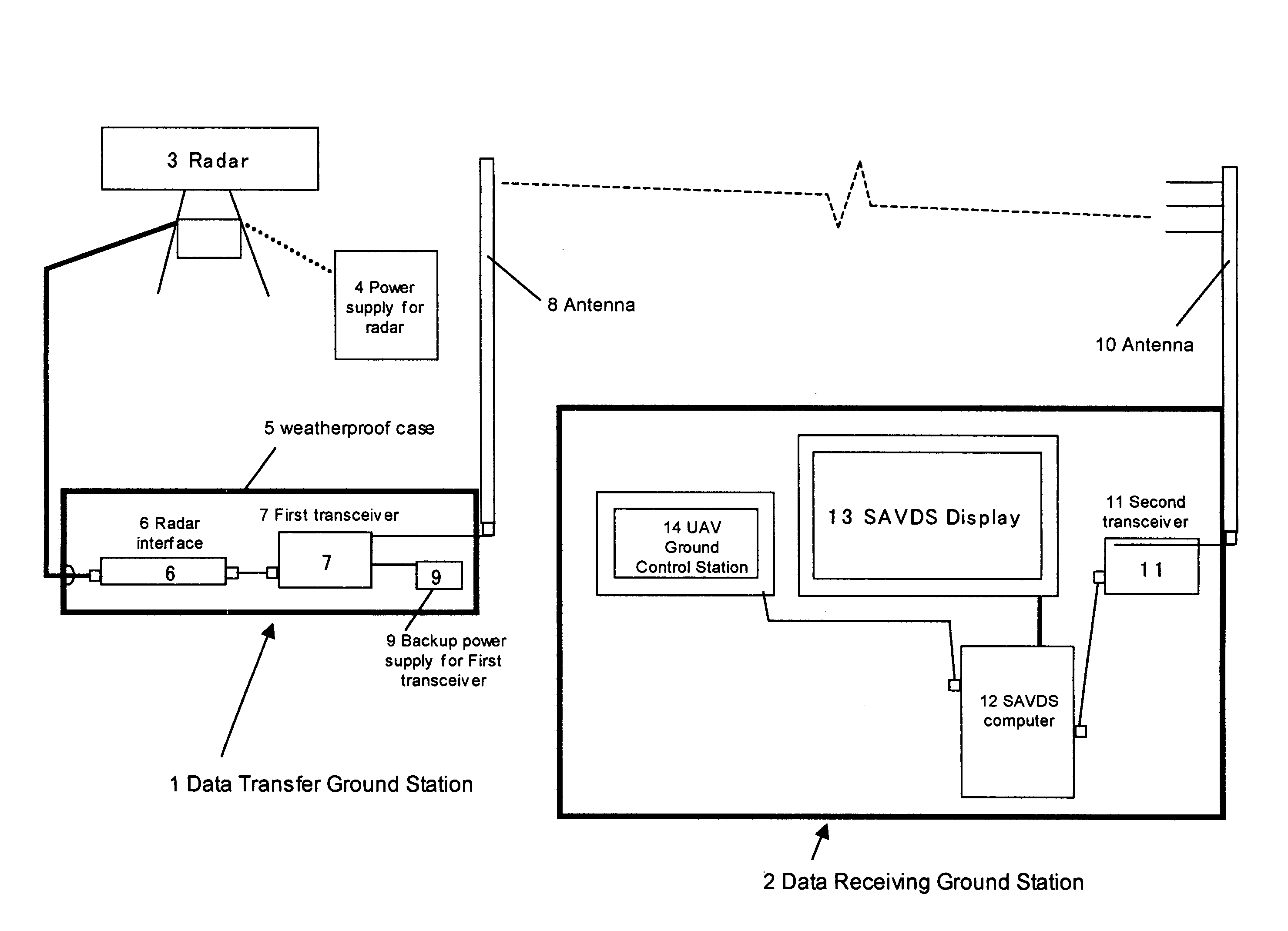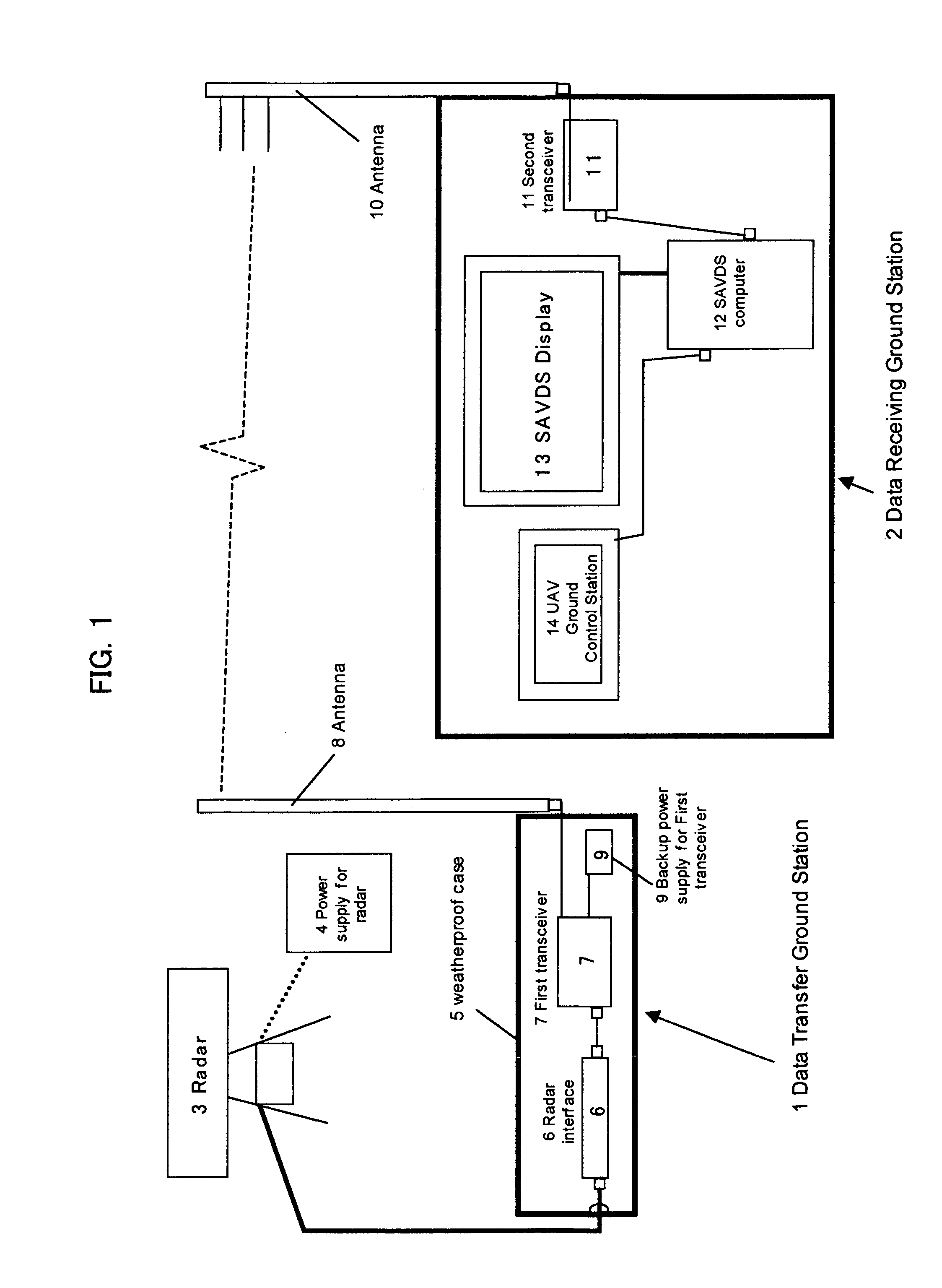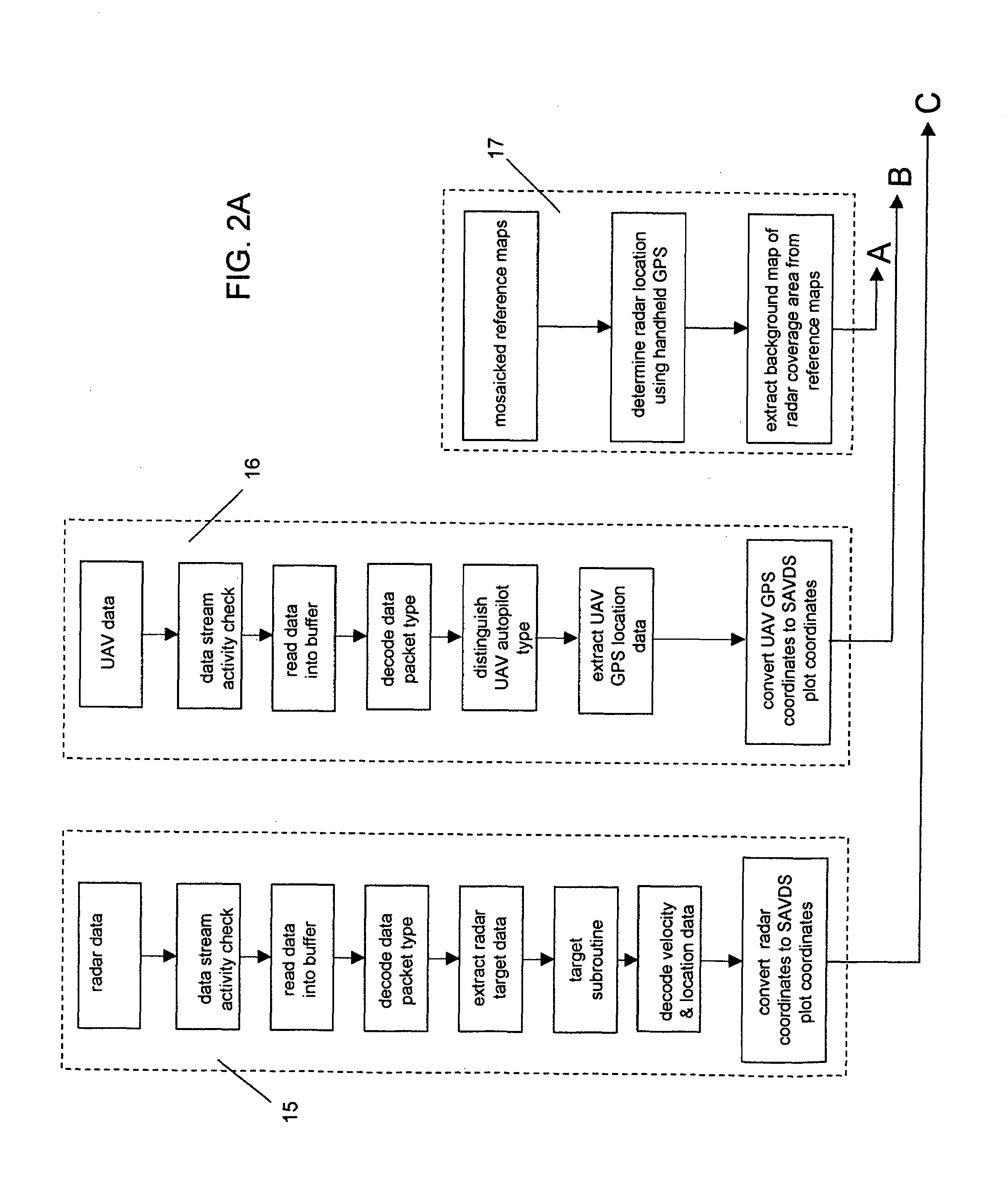Ground-based sense-and-avoid display system (SAVDS) for unmanned aerial vehicles
a display system and unmanned aerial vehicle technology, applied in the field of ground-based sense-and-avoid display system for unmanned aerial vehicles, can solve the problems of limited low-altitude uav operations, lack of a standardized approach, and difficulty in effectively sensing
- Summary
- Abstract
- Description
- Claims
- Application Information
AI Technical Summary
Problems solved by technology
Method used
Image
Examples
Embodiment Construction
[0011]With reference to FIG. 1, the SAVDS system includes two functional subsystems: Data Transfer Ground Station (DTGS) 1 and Data Receiving Ground Station (DRGS) 2. DTGS 1 further comprises a ground-based radar 3, such as the Light and Special Divisions Interim Sensor (LSDIS / PSTAR) radar manufactured by Lockheed Martin. Radar 3 is connected to a primary electric power supply 4 that may comprise any portable generator or typical facility power common in the art. Output from radar 3 is routed into a weatherproof case 5. Within case 5, radar data is minimally conditioned by an element of the radar called the control indicator unit 6. Control indicator unit 6 may be powered by the same energy source as the radar 3. Control indicator unit 6 passes radar data to the first spread-spectrum radio transceiver 7 such as those made by FreeWave Technologies. First radio transceiver7 emits the radar data via an omnidirectional antenna 8 that can be mounted on the external side of case 5. A seco...
PUM
 Login to View More
Login to View More Abstract
Description
Claims
Application Information
 Login to View More
Login to View More - R&D
- Intellectual Property
- Life Sciences
- Materials
- Tech Scout
- Unparalleled Data Quality
- Higher Quality Content
- 60% Fewer Hallucinations
Browse by: Latest US Patents, China's latest patents, Technical Efficacy Thesaurus, Application Domain, Technology Topic, Popular Technical Reports.
© 2025 PatSnap. All rights reserved.Legal|Privacy policy|Modern Slavery Act Transparency Statement|Sitemap|About US| Contact US: help@patsnap.com



